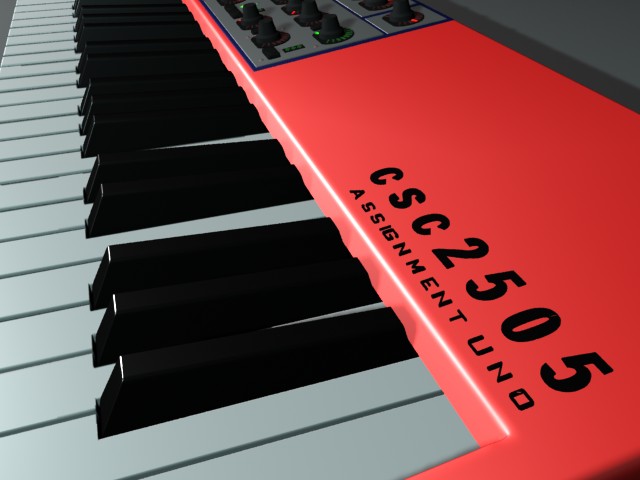
CSC 2505: Geometric Representations for Computer Graphics
Assignment 1
Patrick Coleman
October 18, 2005

CSC 2505: Geometric Representations for Computer Graphics
Assignment 1
Patrick Coleman
October 18, 2005
This is a model of a synthesizer (actually very similar to well-known one, if you know much about them). It's modeled as subdivision surfaces using the Renderman Artist Tools implementation instead of Maya's. Creases of varying hardness (see DeRose et. al 98) are used to create the rounded edges to achieve a more realistic look. The model is made up of 774 meshes, consisting of 33, 645 faces or 14 hours of work (including Maya crashes). The LED's are lit using a combination of artificial local illumination, emission, and transparency.
Each key independently rotates about a horizontal axis under limit constraints to avoid unrealistic orientations. The text overlay is parameterized with an character string. Each LED can be either on or off. All knobs rotate about an axis orthogonal to the control surface plane. The modulation wheel and pitch stick rotate appropriately, and all buttons can be depressed. The two lit displays reference a texture map.
High Resolution tif images are linked at the end.
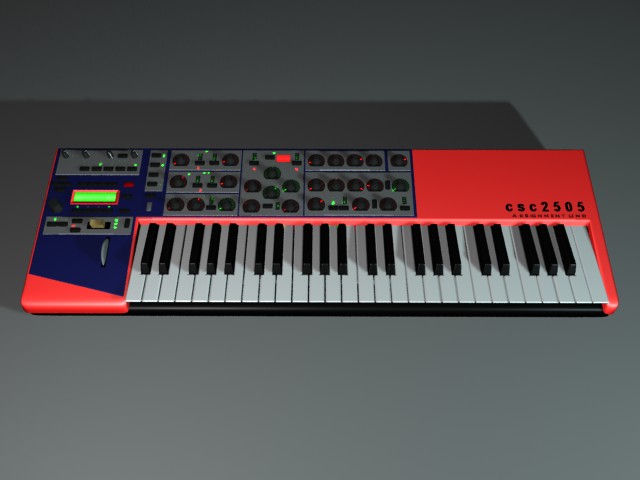
A frontal view.

Another view.

A close-up of the keys.
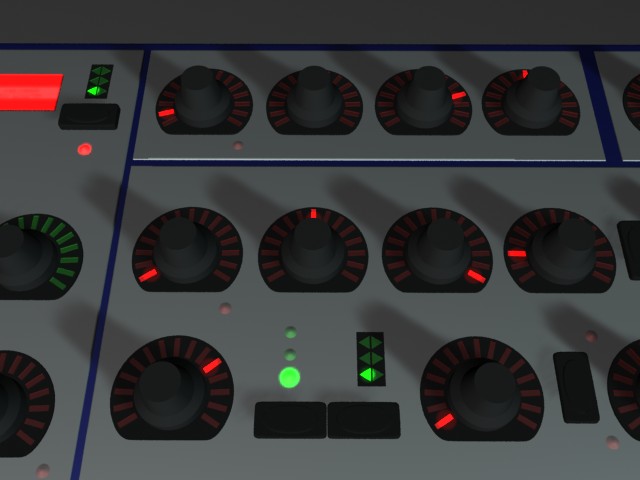
Part of the control surface.
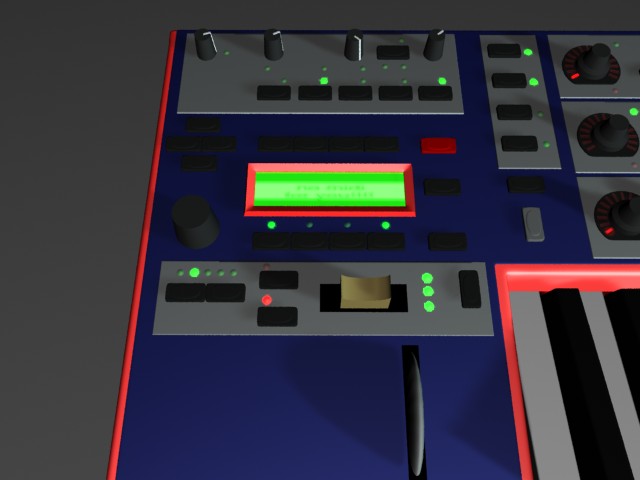
Another view of the controls.

A close-up of one display. Unfortunately, this model doesn't respond to or produce midi signals.

A silly view that shows the smaller details.

It looks interesting when you turn down the lights.
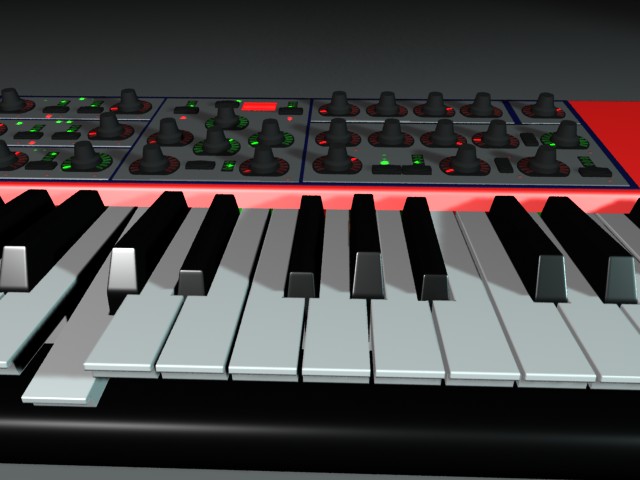
Name that chord.
Here's the uncompressed images:
In the Shadow of the Valley of the Knobs.
It's a C Half-Diminished Seventh.
Here's the Maya and Slim files. You'll need RAT 6.5 to render the model. If you don't have it, Maya should load just the meshes ok for renderers other than RenderMan.
patrick coleman dynamic graphics project university of toronto
patrick at dgp dot toronto dot edu